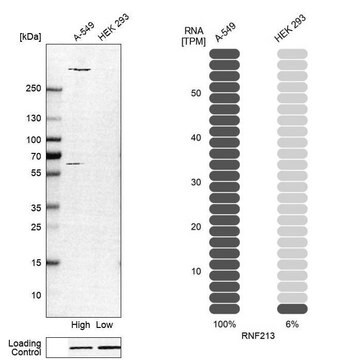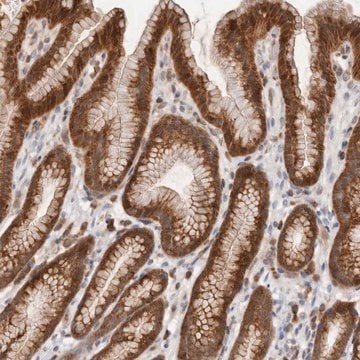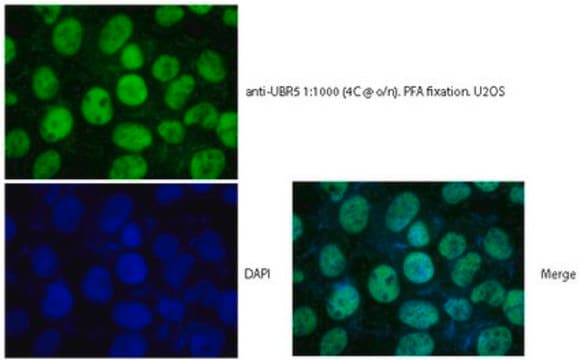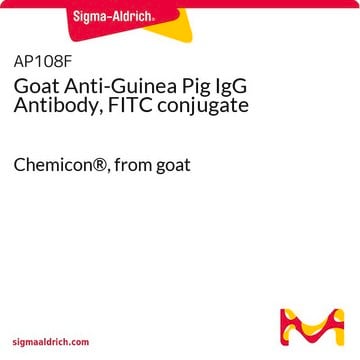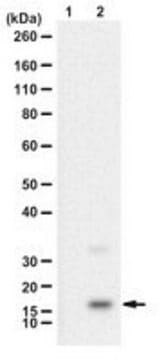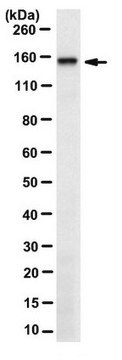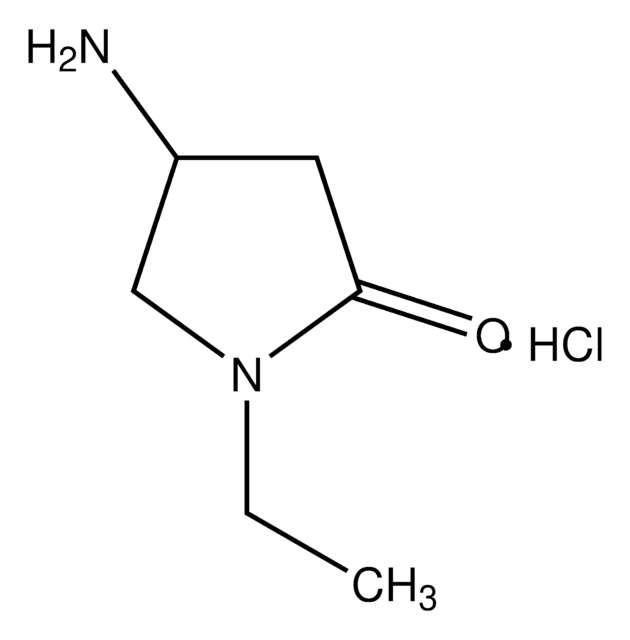ABC1391
Anti-Ring Finger Protein 213 (RNF213)
from rabbit
Sinônimo(s):
E3 ubiquitin-protein ligase RNF213, ALK lymphoma oligomerization partner on chromosome 17, Mysterin, RING finger protein 213, RING-type E3 ubiquitin transferase RNF213
About This Item
Produtos recomendados
fonte biológica
rabbit
forma do anticorpo
purified antibody
tipo de produto de anticorpo
primary antibodies
clone
polyclonal
reatividade de espécies
human, mouse
embalagem
antibody small pack of 25 μg
técnica(s)
immunocytochemistry: suitable
immunoprecipitation (IP): suitable
western blot: suitable
Isotipo
IgG
nº de adesão NCBI
nº de adesão UniProt
Condições de expedição
ambient
modificação pós-traducional do alvo
unmodified
Informações sobre genes
human ... RNF213(57674)
Descrição geral
Especificidade
Imunogênio
Aplicação
Western Blotting Analysis: A 1:2,000 dilution from a representative lot detected Ring Finger Protein 213 (RNF213) in HUVEC transfected with siRNA213 (Courtesy of Dr Akio Koizumi at Kyoto University).
Immunocytochemistry Analysis: A representative lot detected Ring Finger Protein 213 (RNF213) in HeLa cells treated with RNF213 siRNA (Hitomi, T., et. al. (2013). Biochem Biophys Res Commun. 438(1):13-9).
Western Blotting Analysis: A representative lot detected Ring Finger Protein 213 (RNF213) in Western Blotting applications (Hitomi, T., et. al. (2013). Biochem Biophys Res Commun. 438(1):13-9; Banh, R.S., et. al. (2016). Nat Cell Biol. 18(7):803-13; Kobayashi, H., et. al. (2015). J Am Heart Assoc. 4(7)).
Qualidade
Western Blotting Analysis: 1 µg/mL of this antibody detected Ring Finger Protein 213 (RNF213) in HEK293T cells transfected with 3XFlag RNF213 wild-type.
Descrição-alvo
forma física
Outras notas
Not finding the right product?
Try our Ferramenta de seleção de produtos.
Código de classe de armazenamento
12 - Non Combustible Liquids
Classe de risco de água (WGK)
WGK 2
Ponto de fulgor (°F)
does not flash
Ponto de fulgor (°C)
does not flash
Certificados de análise (COA)
Busque Certificados de análise (COA) digitando o Número do Lote do produto. Os números de lote e remessa podem ser encontrados no rótulo de um produto após a palavra “Lot” ou “Batch”.
Já possui este produto?
Encontre a documentação dos produtos que você adquiriu recentemente na biblioteca de documentos.
Nossa equipe de cientistas tem experiência em todas as áreas de pesquisa, incluindo Life Sciences, ciência de materiais, síntese química, cromatografia, química analítica e muitas outras.
Entre em contato com a assistência técnica